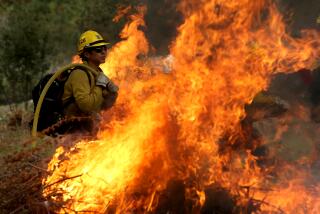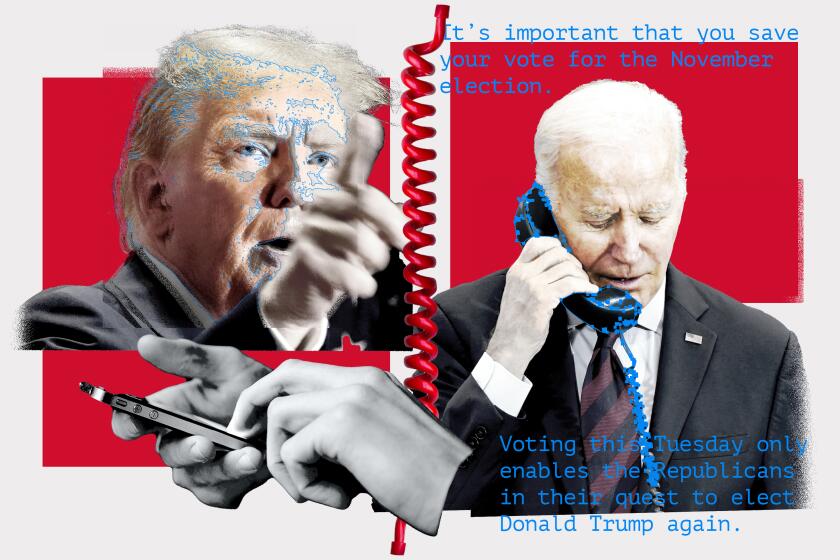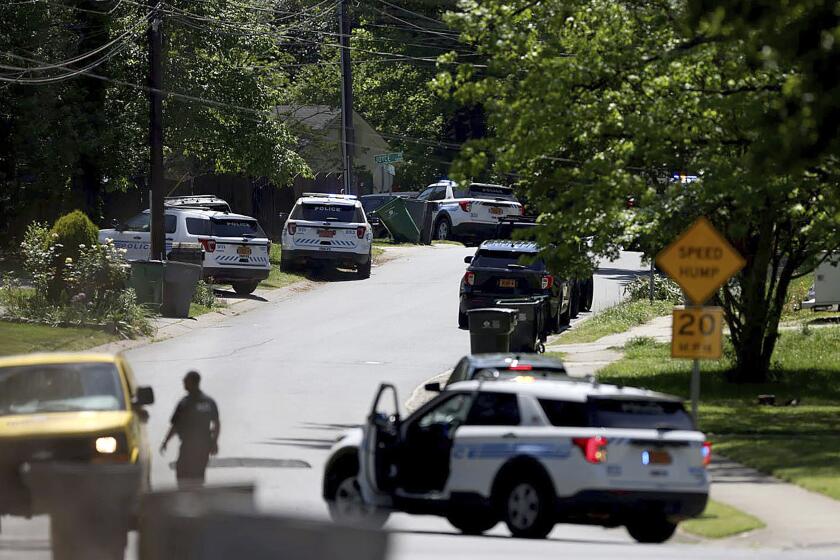U.S. wildfires scorch land at dramatic rate, but then there’s the Alaska factor
It’s hard to get a grip on how bad America’s wildfire problem is. For starters, the numbers can be complicated and misleading.
Consider this statistic: So far this year, wildfires have scorched more U.S. land than in the first eight months of any year over the last decade, according to data published by national fire officials on Monday.
Wildland blazes have consumed almost 7 million acres since January, the National Interagency Fire Center says. That’s larger than the state of Vermont, and a 50% increase over the last decade’s average of 4.8 million acres burned over the same period from January to August.
Sounds bad, right? But the truth is more complicated.
Here’s one reason: More than 5 million of those acres were in Alaska, often far from civilization.
“It’s going to go down as our No. 2 in our top 10 largest fire seasons,” behind the 6.6 million acres burned in 2004, said Sam Harrel, a spokesman for the U.S. Bureau of Land Management’s Alaska Fire Service.
“What happened was, we had a low snow year, followed by a dry spring with a record-breaking warm May and June,” Harrel said.
Then, one weekend in June, three days of storms dropped little rain but unleashed 10,000 to 15,000 lightning strikes a day, which started more than 300 fires across Alaska, Harrel said.
“It was crazy,” he said. Two fires destroyed about 50 homes and damaged roughly 50 more structures, he said.
But much of the fires scorched the amount of land they did because Alaska is vast and sparsely populated, and fire officials felt no need to intervene.
So the blazes gobbled up space, much as they had before the creation of modern wildland firefighting.
“Fire is all part of the ecology of the land,” Harrel said. “It’s a big part of forest regeneration, and we have the opportunity to let fire take its natural course in Alaska, where we will have a 20,000- to 30,000-acre fire with a handful of smoke jumpers on it to protect some cabins or valuable assets somewhere in a vicinity of that fire.”
If there were a fire the same size in California, Harrel said, “There’d be 2,000, 3,000 firefighters there. ... It’s just not the same.”
On Monday, more than 25,000 people were battling U.S. wildfires, mostly across California and the Pacific Northwest. More than 13,000 of those firefighters were trying to control blazes in California, which have charred dozens of homes so far this year.
Here’s what the 7-million-acre number also conceals: Before Alaska’s megafires erupted in June, the nation had been on course for a slightly below-average year in terms of overall acres scorched, according to data published by the National Interagency Fire Center last week.
Richard Minnich, a professor in the department of earth sciences at UC Riverside, downplayed the situation across the West. “Is it unusual? I don’t think so,” he said. “All the areas we’ve seen burning right now are areas we’ve seen burning in the past.”
But wildfires still present several pressing problems, many of which are getting worse over the long run, according to experts and officials.
More Americans are moving into rural areas exposed to wildfire danger. Climate change and global warming are threatening to extend the fire season and bring more severe droughts. A century of fire protection has allowed some forests to overgrow, so that they are like kindling just waiting for a light.
Federal officials say the U.S. Forest Service’s budget will eventually be overwhelmed by increased firefighting costs, diverting the agency from fire-prevention work, unless Congress makes a fix.
“You’ve got four or five issues coming together that really make it problematic. Something’s got to be done,” said Wade Martin, professor and chairman of the economics department at Cal State Long Beach, who studies wildfires and environmental economics. “There’s going to be fires every year. The thing that’s making them more of a news story is the increased assets at risk.”
Alaska’s big role in this season’s fire totals appears to be over, at least for now. The weather has gotten wetter and the fires have calmed so much that the state is no longer accepting help from outside firefighters.
In fact, “We’re mobilizing fire crews to send to the Lower 48 right now,” said Harrel, of the Alaska Fire Service. “Now it’s our turn to reciprocate and send what help we can.”
Follow @MattDPearce for national news
Read more about California wildfires >>
ALSO:
Washington’s wildfire season gets off to an early, unprecedented start
Gov. Brown highlights climate change risks at site of Rocky fire
Op-Ed: Why we need to learn to live with fire instead of fighting it
More to Read
Start your day right
Sign up for Essential California for news, features and recommendations from the L.A. Times and beyond in your inbox six days a week.
You may occasionally receive promotional content from the Los Angeles Times.







